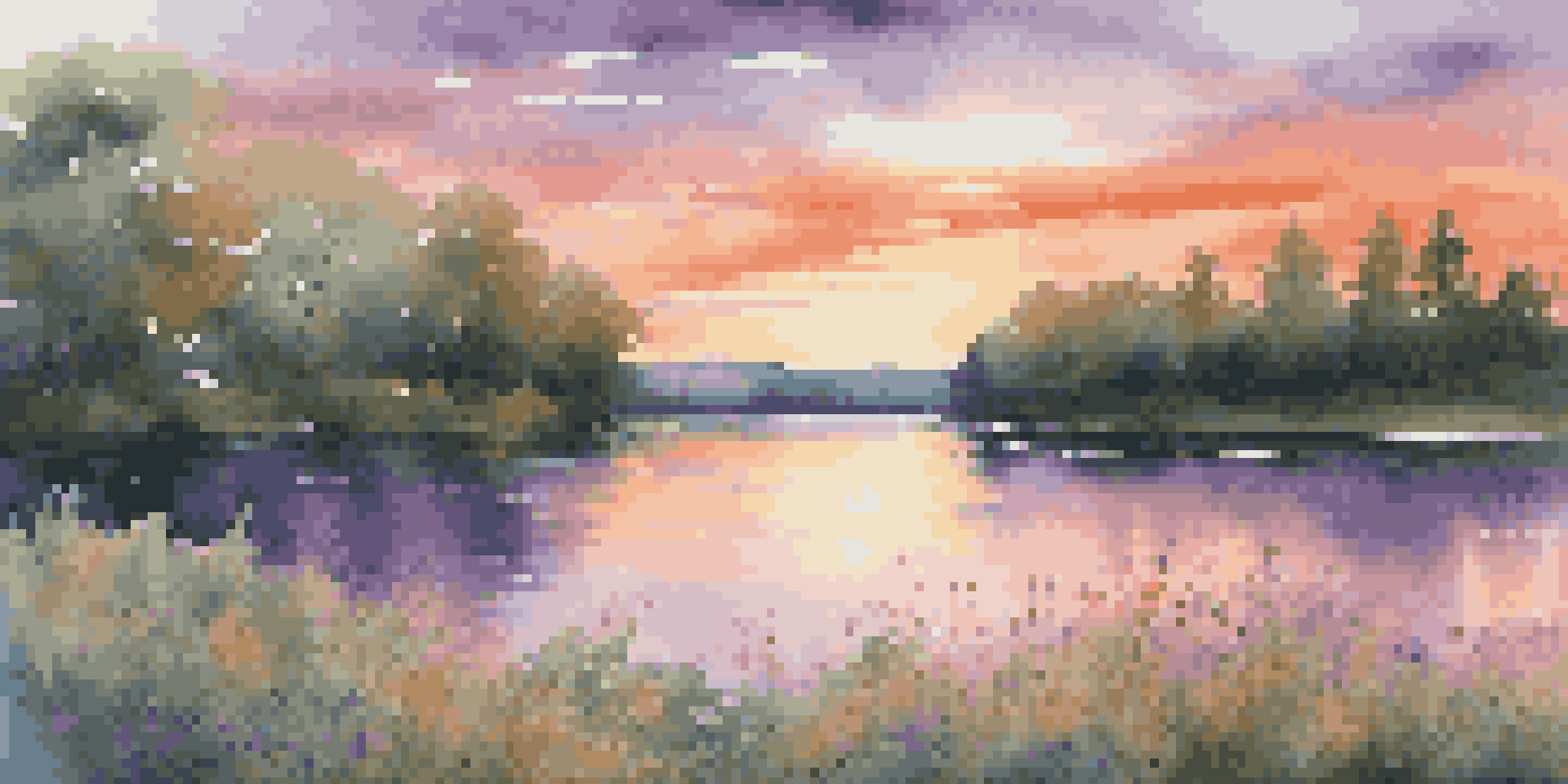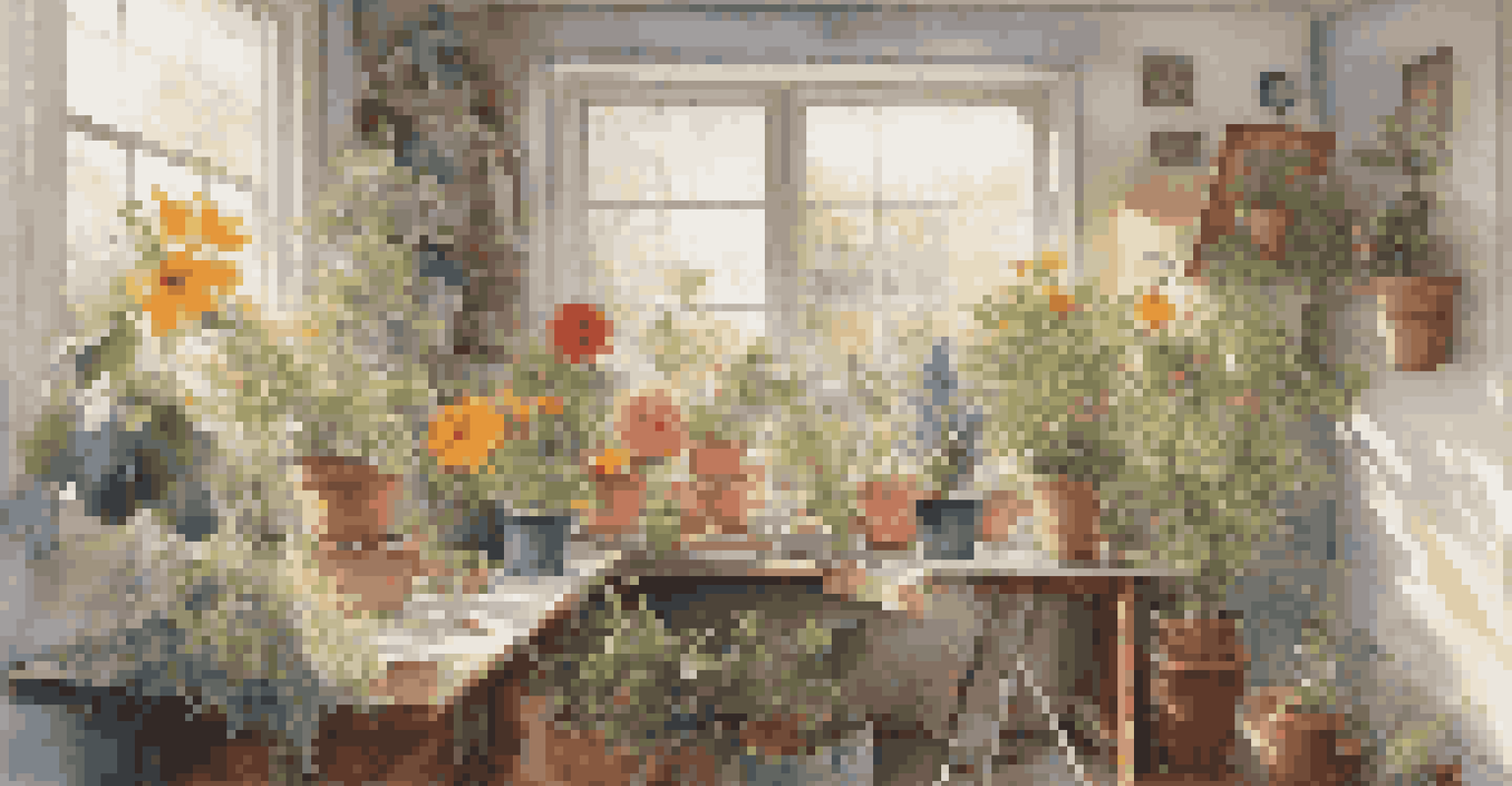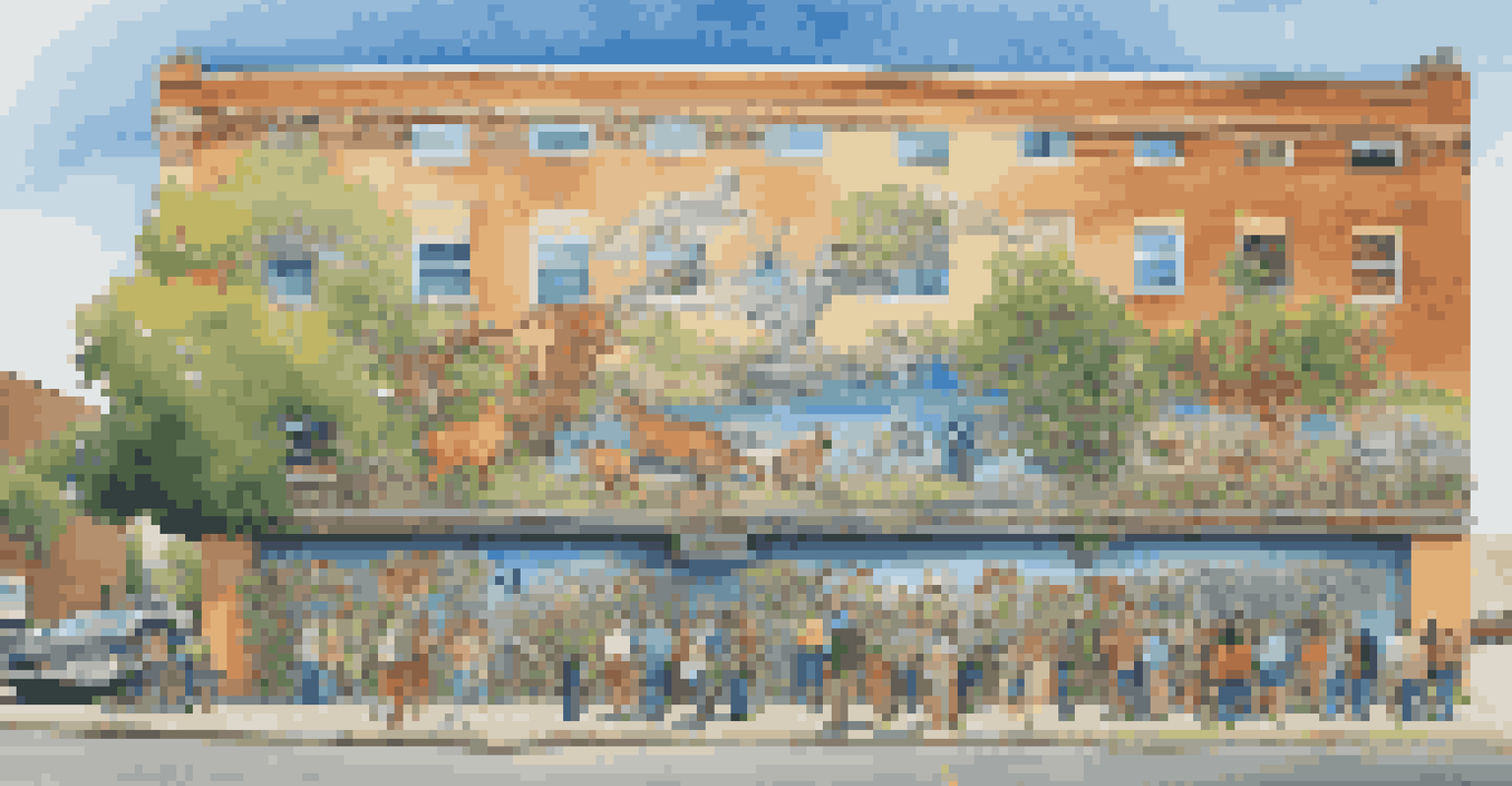Exploring Biophilia in Art: Nature's Influence on Creativity

Understanding Biophilia: Nature's Bond with Humanity
Biophilia is a term that describes the innate connection humans have with nature. This connection is more than just a preference for green spaces; it’s a deep-rooted psychological and emotional bond. By recognizing this link, we can better understand how nature influences our feelings, thoughts, and creativity.
In every walk with nature one receives far more than he seeks.
The concept of biophilia suggests that our well-being is intertwined with nature, affecting our mental health and emotional stability. This bond has been explored across various disciplines, from psychology to architecture, highlighting the significant role nature plays in our lives. Understanding biophilia can help artists harness this connection to inspire their work.
For artists, embracing biophilia means drawing not only from the beauty of nature but also from the feelings it evokes. This can lead to powerful artwork that resonates deeply with audiences, creating a shared experience that transcends the visual.
The Artistic Interpretation of Nature
Artists throughout history have found inspiration in nature, from the serene landscapes of the Impressionists to the vibrant colors of botanical art. This artistic interpretation often reflects the beauty and complexity of the natural world. By capturing the essence of nature, artists can convey emotions and stories that resonate with viewers.

For instance, Georgia O'Keeffe's iconic flower paintings not only depict nature but also explore the relationship between humans and the environment. Her work invites viewers to see the beauty in details that might otherwise be overlooked. Through this lens, nature becomes a source of inspiration and introspection.
Biophilia Connects Us to Nature
Biophilia describes the deep-rooted bond between humans and nature, influencing our mental health and creativity.
Moreover, contemporary artists are increasingly integrating natural elements into their work, whether through materials or themes. This trend reflects a growing awareness of environmental issues and a desire to reconnect with the natural world, making nature an essential element of modern creativity.
Nature as a Muse: Case Studies in Art
Many renowned artists have openly discussed how nature serves as their muse. Take Vincent van Gogh, for example; his passion for capturing the essence of the countryside is evident in masterpieces like 'Starry Night' and 'Sunflowers.' These works are not just representations of nature but are infused with emotion and energy, demonstrating the profound impact nature had on his creativity.
Art is the most beautiful of all lies; it is a lie that tells the truth about nature.
Similarly, Ansel Adams took his love for the natural world and transformed it into stunning black-and-white photographs of landscapes. His ability to show the beauty of light and shadow in natural settings invites viewers to appreciate the environment in a new light, highlighting nature's role in shaping artistic vision.
These case studies exemplify how artists channel their love for nature into their work, creating pieces that inspire and provoke thought. By examining how these artists engage with nature, we can gain insights into the broader relationship between biophilia and creativity.
The Influence of Nature on Mood and Creativity
Research shows that spending time in nature can significantly enhance mood and boost creativity. For artists, this means that immersing themselves in natural settings can lead to greater inspiration and innovative ideas. The tranquility of a forest or the vibrant colors of a sunset can spark the imagination and encourage artistic expression.
Moreover, studies suggest that even viewing images of nature can have a positive impact on creativity. This indicates that the presence of natural elements, whether physically or visually, can help clear mental blocks and foster a more open mindset. For artists, this can be a crucial step in their creative process.
Nature Inspires Artistic Expression
Artists draw inspiration from nature, using its beauty and complexity to create works that resonate emotionally with audiences.
Incorporating nature into their daily lives—be it through walks in the park, gardening, or simply enjoying a view—can help artists cultivate a more creative environment. Understanding this connection allows them to draw from their surroundings, ultimately enriching their work and the messages they convey.
Biophilic Design: Bridging Art and Nature
Biophilic design is an approach that seeks to connect people with nature through the built environment. This concept applies to architecture, urban planning, and art, promoting designs that incorporate natural elements. By creating spaces that reflect the beauty of nature, artists and designers can enhance the human experience and foster a sense of well-being.
For example, incorporating natural light, greenery, and water features into public spaces can create a soothing atmosphere that encourages creativity and collaboration. This not only benefits artists but also enhances the overall community experience, promoting a deeper appreciation for nature.
By embracing biophilic design, artists can create immersive environments that invite viewers to engage with their work on a more profound level. This fusion of art and nature creates a dynamic that resonates with audiences, reinforcing the emotional connection that biophilia fosters.
The Role of Nature in Modern Art Movements
In recent years, there has been a noticeable shift towards incorporating ecological themes in modern art movements. Artists are increasingly addressing environmental issues, sustainability, and the human relationship with nature through their work. This reflects a growing awareness of the impact of climate change and the urgent need to reconnect with our environment.
For instance, movements like Environmental Art and Land Art showcase artists using natural materials or creating works that interact with nature directly. These artists not only create visually striking pieces but also provoke thought and discussion about our responsibilities toward the planet.
Modern Art Embraces Ecological Themes
Contemporary art movements increasingly focus on environmental issues, highlighting the urgent need to reconnect with our natural world.
As modern art continues to evolve, the influence of nature remains a powerful driving force. By exploring these themes, artists can inspire change and encourage viewers to reflect on their connection with the natural world, reinforcing the relevance of biophilia in contemporary art.
Fostering a Connection: Engaging with Nature through Art
Engaging with nature through art can be a transformative experience for both artists and audiences. Workshops, community art projects, and outdoor exhibitions provide opportunities to explore the relationship between creativity and the natural world. These experiences help cultivate a deeper appreciation for nature and its role in artistic expression.
Art can serve as a bridge, connecting people to their environment in meaningful ways. For example, creating nature-inspired murals in urban areas can beautify spaces while promoting awareness of local ecosystems. Such initiatives encourage communities to engage with their surroundings, fostering a sense of stewardship for the environment.

By actively participating in art-related activities that celebrate nature, individuals can strengthen their connection to the environment. This not only enhances creative expression but also nurtures a collective consciousness that values and protects our natural world.